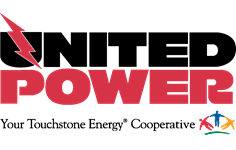
Engaging with our members and communities is the highest privilege of running an electric cooperative. Understanding our members’ needs and goals allows us to meet — and often exceed — their expectations for providing electricity.
I had the pleasure of visiting two of our business members this past month — Meati Foods, the manufacturer of a “superfood” meat substitute made from mycelium, and several Chevron-owned sites. Although the two businesses could not be more different, they are similar in their visions for the energy future.
Their corporate visions include using electricity to improve operations and reduce their carbon footprint. This strategy aligns with Our Cooperative Roadmap. We have made significant progress in reducing our own greenhouse gas emissions — down 26% since May 1 — and further reductions are planned.
The value of reliable and resilient electric power is core to the business success of both Meati Foods and Chevron. The Rockies Business Unit of Chevron has pioneered the electrification of oil and gas sites, which eliminates the use of diesel generators. The benefits of this solution are a cost-effective alternative to operating and maintaining large generators and a smaller, cleaner, and quieter footprint. One site supervisor told me, “We love [electrification] because it is quiet, does not smell, and we can count on it to work.” Reliable power is also critical for Meati Food’s process, which turns a small handful of mycelium into the meat equivalent of 350 head of cattle in just over three days. Even brief power interruptions create challenges.
In both cases, there is a desire to develop on-site generation and storage that aligns perfectly with United Power’s vision of hyper-localized power, keeping power supply close at hand in a world where transmission congestion is increasing and costs are rising. Keeping generation and storage in our communities has the added benefit of bringing additional tax revenue and jobs. It also bolsters reliability and grid resilience.
As part of our energy transition and the expansion of our power supply portfolio, we broke ground on a unique 162 MW natural gas project in September that exemplifies our hyper-localization strategy. The Mountain Peak Power plant, developed in partnership with Kindle Energy, sits adjacent to one of our rural substations. The site borders a natural gas line and hosts one of our 11 MW battery energy storage systems. Since it all resides on the distribution system, it negates the need for costly transmission. It will help ensure reliability and resource adequacy at times when renewable generation is underproducing. Combined with the on-site battery, it provides a closed loop for power to support our system.
United Power will also open the state’s largest and the West’s longest duration battery on the distribution system in December. The 33 MW, six-hour battery will be located in Brighton. Further, New ERA funds will be used to offset the cost of solar generation produced in a disadvantaged community in Alamosa County, owned by the same company that will operate the Brighton battery facility. It marks continued progress in expanding resources close to home and means we have nearly 115 MW of critical storage, allowing us to buy low-cost energy to discharge during our peak.
On a final note, we are moving into the “shoulder” months when electric usage is typically lower. It is also when work gets done on generators, substations, and related equipment. There are times when that means we have to take outages for work to be completed safely — especially by our transmission providers. We understand these outages can be inconvenient and will work diligently to communicate when they may occur. I ask you to make sure the contact information on your account is up-to-date so that you do not miss alerts.
A great thank you to your Board of Directors for their vision and support, and to the amazing women and men of United Power, whom I have the honor to serve. As always, please feel free to reach out to me with your questions, comments and concerns.

